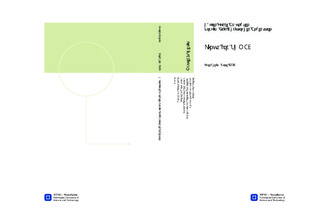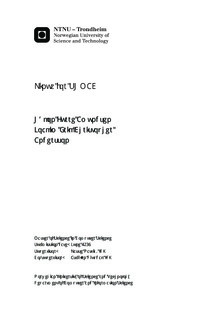| dc.contributor.advisor | Natvig, Lasse | nb_NO |
| dc.contributor.advisor | Djupdal, Asbjørn | nb_NO |
| dc.contributor.author | Amundsen, Håkon Furre | nb_NO |
| dc.contributor.author | Andersson, Joakim Erik Christopher | nb_NO |
| dc.date.accessioned | 2014-12-19T13:41:46Z | |
| dc.date.available | 2014-12-19T13:41:46Z | |
| dc.date.created | 2014-10-01 | nb_NO |
| dc.date.issued | 2014 | nb_NO |
| dc.identifier | 751712 | nb_NO |
| dc.identifier | ntnudaim:11507 | nb_NO |
| dc.identifier.uri | http://hdl.handle.net/11250/253830 | |
| dc.description.abstract | For several years it has been possible to improve processor performance by taking advantage of the ever increasing transistor density.Recently, the power demand of processors has exceeded their power budget, so it is no longer possible to utilize all parts of the processor at the same time.The heterogeneous processor architecture is suggested in order to circumvent this effect.By containing specialized processor cores that are optimized for certain types of tasks, the single thread performance can still be increased while staying within the power budget.The SHMAC project provides a research framework for heterogeneous architectures, in which different hardware components acts as interchangeable tiles.Currently, the only processor tile available in the SHMAC project is the ARMv2a ISA compliant Amber processor tile.The only operating systems currently available for SHMAC is the experimental research operating system Barrelfish.Hence, most software written for SHMAC runs without an operating system, directly above the hardware.As the SHMAC hardware is frequently modified, maintaining compatibility between software and hardware is a tedious job, imposing limitations on the efficiency for SHMAC software development.This thesis presents the process of porting the Linux kernel to SHMAC.The Linux kernel provides a powerful abstraction layer which allows the researchers to be more efficient when writing software to SHMAC.The Amber processor tile was upgraded to support the ARMv4T ISA before porting.Once Linux was ported to this new processor tile, a toolchain was generated and a large set of user applications was built.The final result of this project is a familiar Linux environment with over 200 UNIX applications made available through a standard UNIX shell. | nb_NO |
| dc.language | eng | nb_NO |
| dc.publisher | Institutt for datateknikk og informasjonsvitenskap | nb_NO |
| dc.title | Linux for SHMAC | nb_NO |
| dc.type | Master thesis | nb_NO |
| dc.source.pagenumber | 114 | nb_NO |
| dc.contributor.department | Norges teknisk-naturvitenskapelige universitet, Fakultet for informasjonsteknologi, matematikk og elektroteknikk, Institutt for datateknikk og informasjonsvitenskap | nb_NO |

